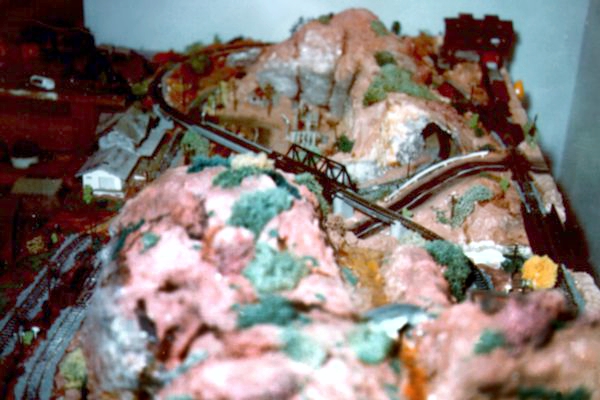Six Decades of Modeling: The 1960s
This seven-part biography provides a detailed timeline of my modeling life. Unlike most modelers, I was not following in my father's footsteps; instead, a number of significant events that took place in the 1960s drew me into the hobby.
1960
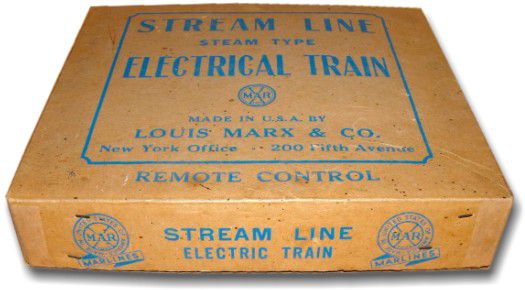
There it sat, deep in the shadows of a little storage cubby. Who knows how long it was there, forgotten, collecting dust? No matter; I soon had that Marx tinplate set up and running. Sparks. Crackles. Ozone. It was glorious. It may have been forgotten by my brothers, but deep inside I had the sense that it would never be forgotten by me.

1963
 Turns out the Marx train set was
much more than just a passing interest; it became far more influential to the shape of my entire life than anyone might have imagined.
While I did stop playing with it eventually, it was not out of disinterest; instead, it was because I'd graduated to the "next
level" of model railroading: a Tyco HO train set, which I'd received for Christmas. Evidently my interest in that little tinplate
set had not gone unnoticed.
Turns out the Marx train set was
much more than just a passing interest; it became far more influential to the shape of my entire life than anyone might have imagined.
While I did stop playing with it eventually, it was not out of disinterest; instead, it was because I'd graduated to the "next
level" of model railroading: a Tyco HO train set, which I'd received for Christmas. Evidently my interest in that little tinplate
set had not gone unnoticed.
My new set? T6219A: Hi Baller in the PRR scheme. (That kid on the cover of the catalog, incidentally, could easily have been me, although my father did not share my passion, not even a little.)
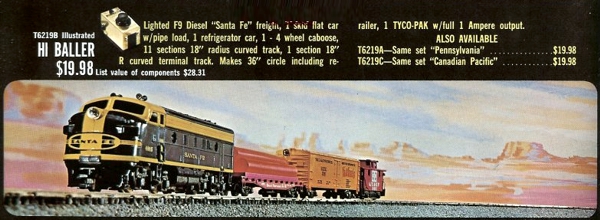
1965
1965 was a turning point: a perfect storm of experiences that further changed the shape of my life, and cemented it in stone. Up until then, my exposure to real trains was a railroad crossing on the way to school. But that was about to change...

 I had my first train ride—behind
a genuine huffing, chuffing steam locomotive, no less—the year that the
Black River and Western began
operations. Standing in an open gondola, cinders raining down on me, I felt as if I was entering a wondrous new universe. Later, a trip to
Roadside America
in Shartlesville, Pennsylvania, showed me an "extreme" vision of modeling, and I started to become conscious of the shape
my hobby life would take. As an aside, it was there that I purchased a postcard which I'd kept right through adulthood: this image
of the elevated line in Jersey City mesmerized me, and very likely influenced my predilection for urban industrial modeling that
became the focus of so much of my later work.
I had my first train ride—behind
a genuine huffing, chuffing steam locomotive, no less—the year that the
Black River and Western began
operations. Standing in an open gondola, cinders raining down on me, I felt as if I was entering a wondrous new universe. Later, a trip to
Roadside America
in Shartlesville, Pennsylvania, showed me an "extreme" vision of modeling, and I started to become conscious of the shape
my hobby life would take. As an aside, it was there that I purchased a postcard which I'd kept right through adulthood: this image
of the elevated line in Jersey City mesmerized me, and very likely influenced my predilection for urban industrial modeling that
became the focus of so much of my later work.
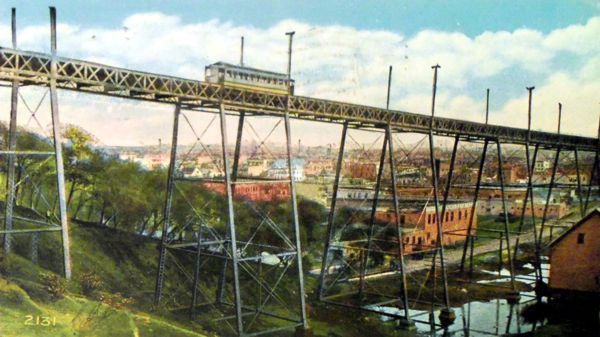
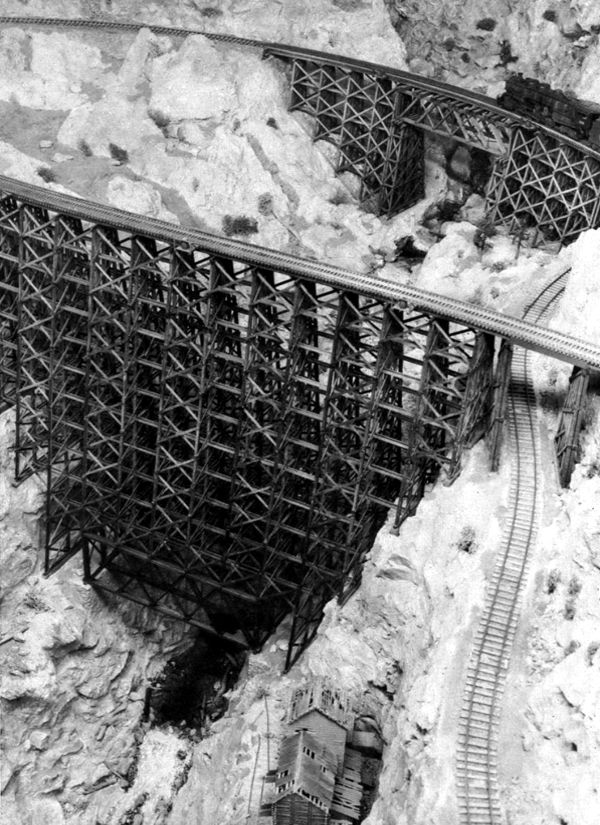
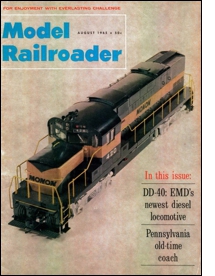 Summer vacations in New Hampshire were
my salvation: no school, no bullies, just me and whatever I wanted to do. Shopping trips to Meredith were always a treat, but that
year was extra-special: I discovered a little hobby shop, Franklin's, where I first encountered Model Railroader magazine. As
I thumbed through the August 1965 issue, I stopped at the full-page photo of Ken Davis' layout (above), and knew for certain exactly
what I wanted to do hobby-wise from that point forward. I immediately took the magazine to the counter and bought it.
Summer vacations in New Hampshire were
my salvation: no school, no bullies, just me and whatever I wanted to do. Shopping trips to Meredith were always a treat, but that
year was extra-special: I discovered a little hobby shop, Franklin's, where I first encountered Model Railroader magazine. As
I thumbed through the August 1965 issue, I stopped at the full-page photo of Ken Davis' layout (above), and knew for certain exactly
what I wanted to do hobby-wise from that point forward. I immediately took the magazine to the counter and bought it.
A move to a new house also had a strong influence on me: it was just a few blocks away from a railroad station in Hopewell, New Jersey, on the Reading Railroad, which I could see from my bedroom window. If I wasn't at school or in my room modeling, I was down at the station watching trains.
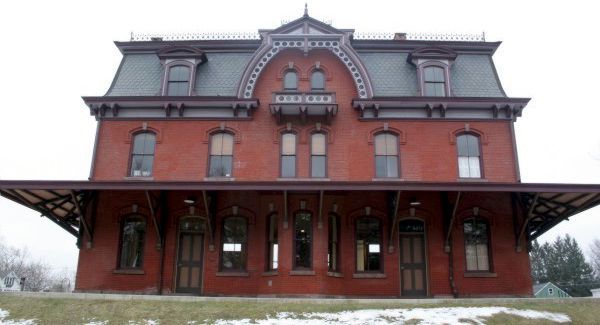
 The year also marked when I embarked
on my first layout. I'd found an old ping pong table in the basement, and squeezed it into my bedroom, where I could set up my HO
train set. Over time, one end of the table began accumulating a mound of plaster, and while it remained white up until the very end,
in my mind it was a handsome, verdant mountain range, complete with waterfall. I was in my element.
The year also marked when I embarked
on my first layout. I'd found an old ping pong table in the basement, and squeezed it into my bedroom, where I could set up my HO
train set. Over time, one end of the table began accumulating a mound of plaster, and while it remained white up until the very end,
in my mind it was a handsome, verdant mountain range, complete with waterfall. I was in my element.
Gradually I became aware of something deep within me making its way to the surface: seeing rails drifting off into the distance was akin to experiencing a spiritual high. Regardless of their location or condition, railroad tracks drew me in more strongly than a moth to a flame, and I could stare at them seemingly for hours. Where would they take me? Everywhere. And nowhere. It didn't matter if they stretched on for miles, or they met an abrupt end at a siding... those parallel lines pulled me out of the here and now and sent me away, to become lost in a haze of feelings impossible to articulate.
1967
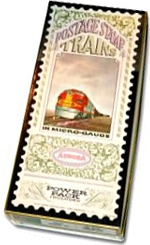 When 1967 arrived, so too did
Postage Stamp Trains. I was instantly smitten, and proceeded to pester my parents
for an entire year before they finally caved in and allowed me to switch scales. And that was a lot of pestering, considering how much
they'd gotten me up until then, as well as the effort to dismantle a ping pong table topped with over a hundred pounds of plaster—seriously.
I had to promise I'd never switch scales again.
When 1967 arrived, so too did
Postage Stamp Trains. I was instantly smitten, and proceeded to pester my parents
for an entire year before they finally caved in and allowed me to switch scales. And that was a lot of pestering, considering how much
they'd gotten me up until then, as well as the effort to dismantle a ping pong table topped with over a hundred pounds of plaster—seriously.
I had to promise I'd never switch scales again.
It was an easy promise to keep, because the moment I began working in N Scale, I just knew this was how I'd be modeling for the rest of my life. I was happy just tinkering with temporary layouts—fixing the track to a two by four foot piece of Homasote with sewing pins—until I bought a copy of N Scale Model Railroad Track Plans from Kalmbach Publishing in 1969. Then, finally, I was ready to build my very first N Scale layout, the Newport & Rock Falls.
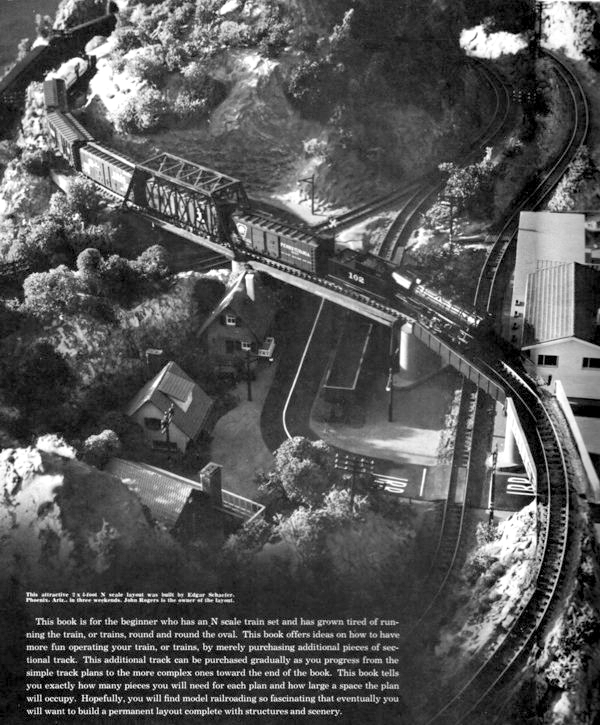
It was the photo on the inside cover (above) that got me started. From that one image I figured out the plan (which, ironically, was not one of the plans featured in the book), and set about building it by nailing that well-worn slab of Homasote to a sheet of plywood. Below is the only surviving image of that very early effort.
